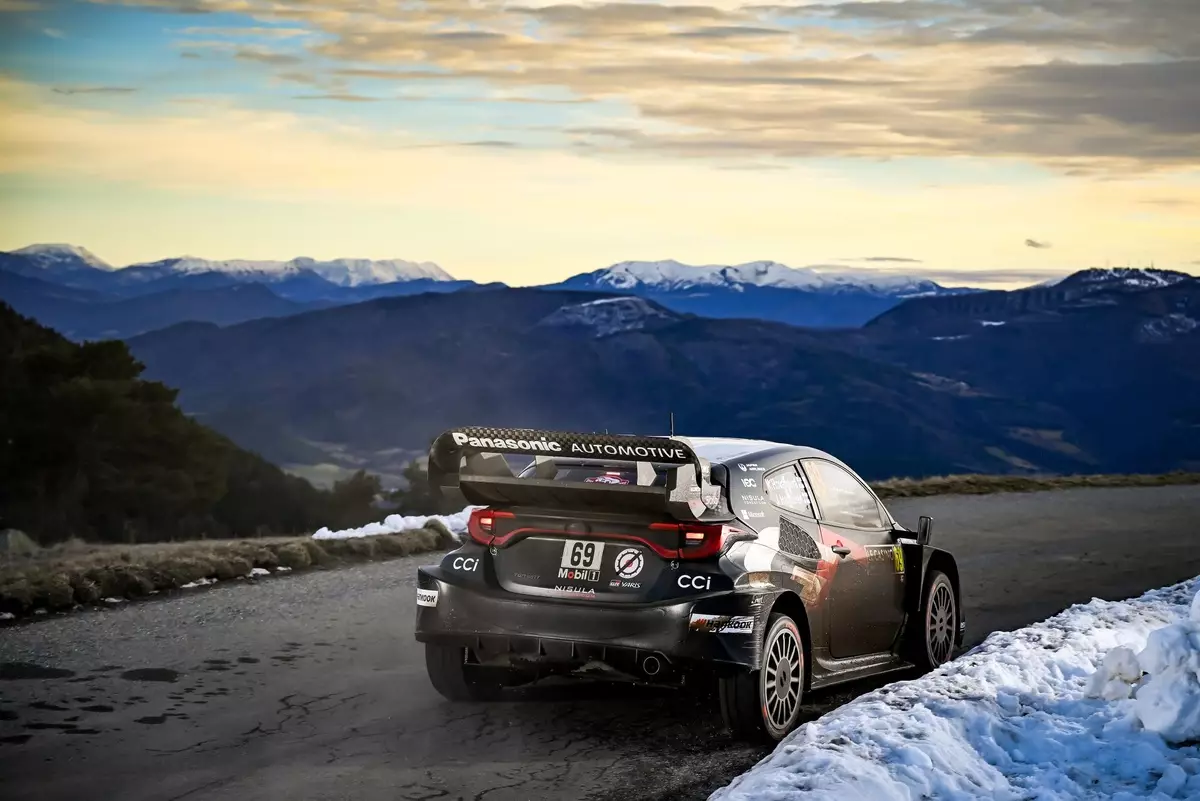In the ever-evolving world of motorsports, one of the most critical elements influencing a driver’s performance is often overlooked: the tyres. Kalle Rovanperä, the two-time World Rally Champion, has emerged as a focal point of discussion regarding his adaptation to the newly introduced Hankook control tyres in the World Rally Championship (WRC). During the recent Monte Carlo rally, which serves as the season opener, Rovanperä exhibited signs of struggle while trying to harness the potential of these tyres, particularly in slick conditions. This situation speaks volumes about the need for continual adaptation, not just in vehicle dynamics but also in the ethos of a driver’s approach.
Rovanperä expressed his concerns regarding the slick tyres, stating, “I think overall it is pretty clear that maybe the driving style that I normally have doesn’t work with the slick [tyre].” This admission not only highlights his self-awareness but also reflects the inherent challenges drivers face as they navigate the fine line between their personal driving style and the specifications of the tyres. In contrast to other surfaces, where he has found success, the slick compound has presented a different array of challenges. Rovanperä’s experience during testing revealed a lack of optimal conditions that further complicated the situation. “We didn’t have clean or clear dry tarmac in my test or in the Devoluy rally last year,” he lamented, indicating the difficulty in gauging the tyre’s true performance potential.
Rovanperä managed to secure a stage victory amid these obstacles, showing resilience and skill. However, ending the first day of the rally in fourth place, trailing his team-mate Sebastien Ogier by a notable 38.5 seconds, amplified his concerns about his pace on slicks. As he pointed out, his typical driving methods may not yield the desired results under the current circumstances.
It’s important to note that Rovanperä is no stranger to adversity, particularly in Monte Carlo. During the 2022 season, he faced challenges with the introduction of the Rally1 car. However, he navigated those obstacles swiftly and eventually dominated that season. His anecdotal reference to that experience provides context to his current struggles; he recognizes that while the adjustments then were heavily focused on car setup, today the issue lies predominantly with tyre performance.
“I don’t think the car is much wrong here; it feels really good, but it is just how to be quick with the tyres that is the issue,” he reflected. Such statements embody the duality of motorsport: the car’s capability versus the driver’s adaptability. Rovanperä’s understanding that the vehicle’s performance doesn’t fully translate to speed on the roads reinforces the complexities involved in rally racing.
While Rovanperä faced personal challenges, his team, Toyota, experienced a robust day overall. Three of the team’s five cars concluded the first day within the top four, underscoring Toyota’s collective strength in rallying. Sebastien Ogier, another seasoned veteran, successfully took over the lead from his teammate Elfyn Evans, who faced a setback due to a half-spin. Ogier’s victory in the stage connected to his childhood brought an emotional underpinning to his celebration. He emphasized that experience plays a pivotal role in racing, but he acknowledged that all drivers bring their unique backgrounds to the line.
His remarks hint at the idea that while experience is invaluable, the race outcome is determined by a confluence of racer skill and conditions on any given day.
As the WRC season unfolds, Kalle Rovanperä’s insights into adapting his driving style to align with the characteristics of Hankook’s tyres will be critical not only for his success but for the collective success of the Toyota team. The art of rally driving is as much about technical ability as it is about the psychological fortitude to learn quickly and adapt under pressure. With Rovanperä’s evident determination, he stands to gain not only from his experiences but also from the evolving nature of the sport itself. In a world where the only constant is change, drivers and teams must continuously recalibrate, reminding themselves that each obstacle is an opportunity for growth.

